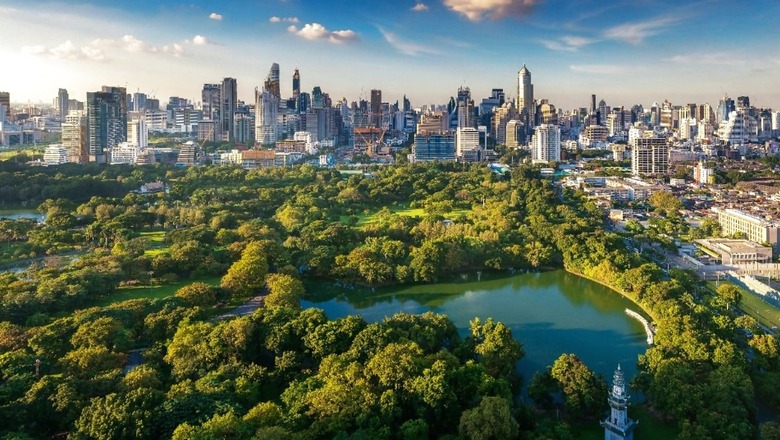
views
The biggest transformation in human evolution took place when the human being started a settled life from a nomadic life. The time since the human being started permanent dwelling, he has always sought a place that may save him from the vagaries of extreme weathers; give him physical security and a comfortable and healthy place where he can grow his family. For this, he has started using more or less a permanent structure with roof and walls which is generically called a ‘building’ and is various names like home, house, workplace, residence, and so on. It is here that he lives most of his life.
As per one study, an individual spends 76% of the time of their life in their residential building (home)! So, it is all the more important that the space where one spends most of their time should be having a positive impact on their health, comfort and the planet which is the home of all human beings. A building is not merely a material-physical structure, but it is an ‘environment’ for the inhabitants residing in it. Any building has three components– a structure, an infrastructure, and ‘an environment’. Both the structure and environment shape each other and its dwellers.
Also Read: A Green Nation Needs Green Habits: Here Are 11 Green Habits To Save The Planet
Right from its conceptualisation, design, construction and finally operating the building, a Green Building is environmentally responsible and resource-efficient throughout its life-cycle. Green buildings may incorporate sustainable materials in their construction (such as reused, recycled content, or made from renewable resources). It can create healthy indoor environments with minimal pollutants (like reduced product emissions). It can feature landscaping that reduces water usage (for example, by using native plants that survive without extra watering). The location and orientation of the Green Building are such that it merges with the already existing amenities of the local areas without putting any extra burden on the local environment and infrastructure.
Benefits of Green Building
Environmental benefits: A Green Building reduces the impact on the environment. If developed properly it can increase the positive impact on the environment. It can improve air and water quality, reduce waste and protect ecology.
Health Benefits: It can positively impact the well-being of people who are residing in the building. It improves the overall quality of life. It is good for the people who reside in it, it is good for the environment in which the building exists and it is good for the planet.
Economic-Benefits: It can reduce operating costs of the building and can improve the productivity, efficiency and health of the occupants. It is a resource-efficient building that uses those reusable resources without compromising the comfort of the dwellers of the building. It can reduce the use of power leading to cost benefits.
Social benefits: It also heightens aesthetic qualities; minimizes strain on local infrastructure and environment. It leads to health and overall prosperity of the society.
How can I make my already existing building as Green-Building?
- One of the major requirements of a Green Building is proper sunshine. This can be done by retrofitting windows so that the sunlight reaches each and every corner of the building.
- If the building does not have water harvesting, we can add water harvesting techniques that are very cost-effective, simple and pro-ecology.
- We can add a solar system to replace the conventional power system in the existing building.
- A simple re-orientation of the interior and exteriors can also be done to the structure of the existing building to make it an environmentally positive building.
- We can replace traditional lights with CFL Lights which are known to have more energy-efficient and less power-consuming.
- We can add a Green-roof to an already existing building. More greenery can be added to exteriors. Further, green walls/ vertical gardens can be added for more greenery and insulating the walls.
- An existing building can be made green by using fewer but more durable materials and generating less waste, as well as accounting for a building’s end-of-life stage by designing for demolition waste recovery and reuse of that building can be done.
- We can engage the occupants of the existing building and inculcate in them the culture of reuse, reduction and recycling. Also, we can do an energy audit of the whole existing building so as to know the power consumption of the entire building.
Green Building is the future of our planet. It is time to make Green Building a revolution in India.
The writer is an interior designer. She is also an environmentalist and has co-authored a book by the name ‘Gift Lungs to Future Generations’. The views expressed in this article are those of the author and do not represent the stand of this publication.
Read all the Latest Opinion News and Breaking News here


















Comments
0 comment